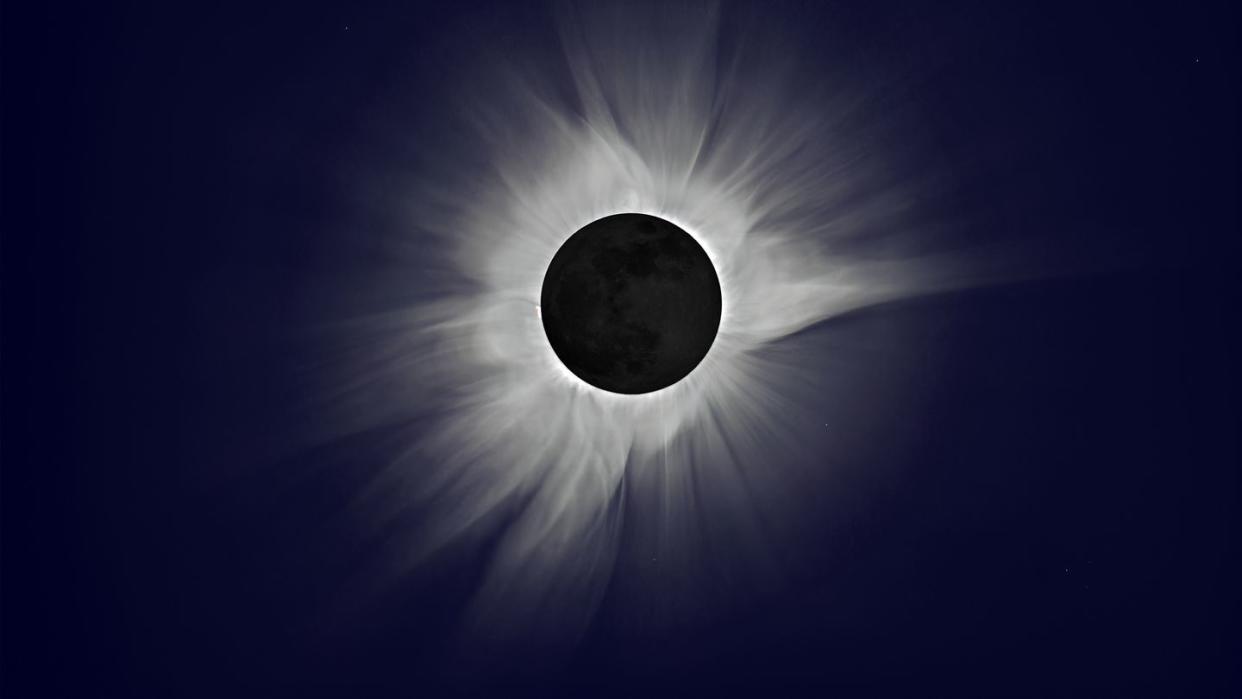Why Some People Will See Mind-Blowing Colors on April 8

"Hearst Magazines and Yahoo may earn commission or revenue on some items through these links."
The rapid shift from light to dark causes a drastic shift in the way our eyes view colors, something that typically happens gradually.
The Purkinje effect will abruptly cause red shades to look darker and greens much brighter.
Wearing red and green during the eclipse can help accentuate the unique occurrence.
To eke out every scientific morsel from a total solar eclipse, pay special attention to your wardrobe. By taking a cue from Christmas and dressing in shades of reds and greens, you’ll provide your eyes with a chance to encounter the Purkinje effect—a shift in color perception that only happens in near-sudden low-light situations.
For a few brief minutes, the Purkinje effect makes reds appear darker and greens brighter.
Typically, eyes have time to adjust to disappearing sunlight as evening gradually fades the light out. The eye’s rod cells (the receptors ideal for low-light conditions) activate as darkness creeps in. The cone cells, on the other hand (known for their ability to recieve color in the daylight), get less active. This transitional period—known as mesopic vision, when the two retina receptors word in tandem—produces a hybrid-style color perception that puts a focus on some colors more than others. The eclipse speeds that all up, and our eyes and brains can’t quite keep up.
“Rods and cones don’t have separate signal pathways to the brain,” said Jay Neitz, a professor ophthalmology at the University of Washington, according to Live Science. “So, information from both of them converges on the very same set of fibers that are linked to our brains.” That gives us competing signals during the mesopic period.
Those competing signals create the Purkinje effect, where the rods aren’t quite humming with nighttime efficiency, but the cones don’t have the light they typically need to function. This means our brain starts processing uniquely, darkening the reds and brightening the greens and blues. So, that red shirt is going to look unusually dark or muted, while greens and blues will start to pop with a newfound vibrancy.
“At the very peak of our rods’ sensitivity is a wavelength that looks like cyan or the color of the ocean,” Neitz said. “That’s the color that really penetrates and is probably most beautiful during [a solar eclipse].”
The more people clad in red and green—the contrast really helps expose the effect—the greater the chance of fully immersing your brain in the effect.
“This Purkinje effect during the coming eclipse will turn the whole experience form just watching the sky go dark to a real-life science demo on your clothes,” an expert at Solar Eyeglasses said, according to the Chicago Tribune. “But to really see the changes in color saturation, lots of people need to wear these complimentary colors.”
This shifting color act doesn’t just happen during the height of the eclipse. The movement of the Moon between the Sun and Earth can take a few minutes, starting to turn the surroundings a level of silver or gray along the way toward the total solar eclipse as well. “Four to five minutes before the eclipse becomes total,” according to a spokesperson for Solar Eyeglasses, “we’re in the intermediate phase called the mesopic vision zone—where it’s not too bright, not too dark, but the surroundings look less colorful. They rather turn grayish or silvery.”
Expect any red or orange to turn darker and look for those greens and blues—and not just on clothes, as trees and water are also prime examples—to enhance.
“If you have a lot of people around you, if you’re making this a group activity,” Nicole Bajic, an ophthalmologist at the Cleveland Clinic told AccuWeather, “you could have some people wear red, some people wear blues and greens.”
You Might Also Like

